In this blog post, I will show you the steps to deploy GitHub desktop using Intune. GitHub Desktop provides an intuitive interface that allows users to perform common Git actions without using the command-line interface. It is available for Windows and macOS operating systems. It’s simpler than using Git’s command-line interface.
GitHub desktop is available for download as .exe form and also as .MSI Installer file as well. When you use .exe based Installer file, It will install the application in User Context. When you will use .MSI Installer to deploy the app using Intune, it will be installed in device context.
For .exe installer file, we will utilize Win32 app deployment method and for .MSI installer we will use Line-of-business app type.
Note
First, we will go through the steps to Deploy GitHub Desktop using MSI Installer, and subsequently, we will go through the steps for deploying the GitHub Desktop using .exe Installer.
Contents
Download GitHub Desktop MSI Installer
To download GitHub Desktop Installer, you can follow the below steps:
- Visit the GitHub Desktop website and click the Download now button.

- Click on the link Download for Windows (MSI) to download GitHub desktop MSI file.
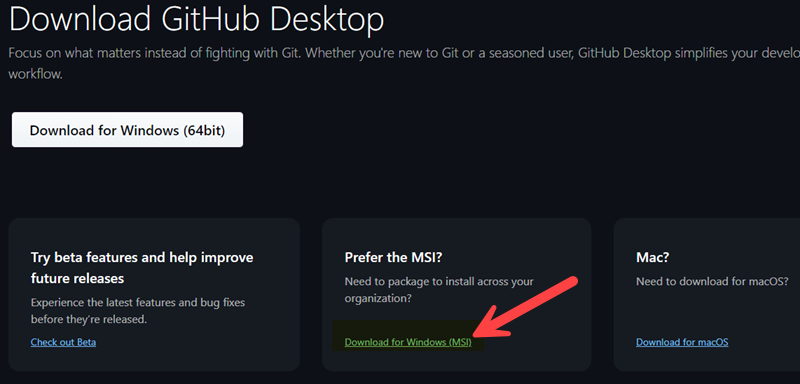
Deploy GitHub Desktop using MSI Installer
The MSI Installer will install this application in the system context, making it available to any user who logs in to the device.
- Sign in to the Intune admin center > Apps > All Apps > click on Add.
- Using the App type drop-down, Select the Line-of-business app option.
- Browse the downloaded MSI file by clicking on the Icon folder.
- App Information: Provide Name, Description, and Publisher Information. Follow through to Assignments and Review + create to create an App deployment.
I haven’t covered all the specific details for setting up the deployment of an MSI application in this post, as the process is the same as deploying any other MSI application through Intune. For a complete, step-by-step guide on deploying MSI applications with Intune, please refer to the blog post titled, Deploy MSI applications using Intune.
Detailed guide on MSI Deployment Steps
- The screenshot below shows the App Information page of the GitHub Desktop MSI app deployment on the Intune admin center
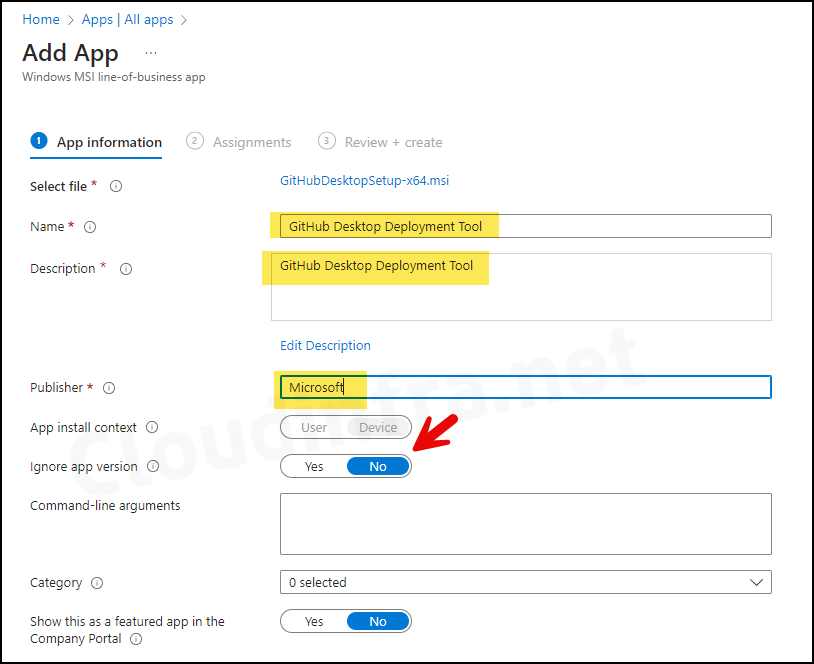
Please be aware that when you use an .MSI-based installer of GitHub desktop app, the application will be installed for each user at their initial sign-in. Each time a user logs in, it will execute the %[#GitHubDesktop.exe] –checkInstall command.
So, if you deploy GitHub Desktop using a device-based installer (MSI) and don’t see the app installed right away, simply sign out and then sign back in on your device.
Important
Deploy GitHub Desktop App using a .EXE Installer
In the previous section of the blog post, we covered the deployment steps for the GitHub Desktop app using an .MSI Installer. If you are deploying the GitHub Desktop app using .exe-based Installer, you can follow the steps below:
1. Download GitHub Desktop EXE Installer
To download GitHub Desktop Installer, you can follow the below steps:
- Visit the GitHub Desktop website and click Download now button and then click on Download for Windows (64-bit). This will download .exe installer file for Github desktop.

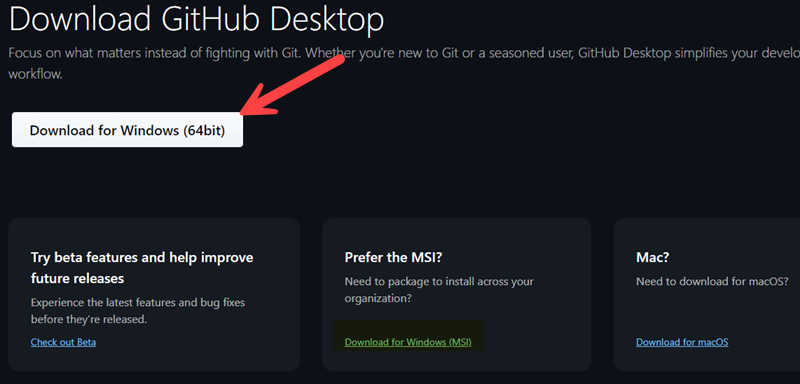
2. Create an App deployment
- Once you download the GitHub desktop app, move it to a separate folder that does not contain any other files apart from application setup files. I have moved it to the D:\Githubsetup folder.
- Create an empty folder called Output anywhere in C:\ or D:\ drive. You can name it whatever you like. This will be the folder where we will generate .Intunewin file.
- Download and Extract the Microsoft Win32 Content Prep tool. I have extracted it to C:\IntuneContentPrepTool.
- Launch the PowerShell console as an administrator and then navigate to the folder where the Microsoft Win32 Content Prep Tool is located to set it as the current directory.
- Run IntunewinAppUtil.exe, and you will see options to specify a Source Folder, Setup File, Output Folder, and Catalog Folder.
- Source Folder: Provide the folder where all application setup files are copied—for example, D:\Githubsetup.
- Setup File: GitHubDesktopSetup-64.exe
- Output folder: C:\output
- Catalog folder: Specify N not to specify any Catalog folder or press Enter to skip.


If you are facing any Issues, creating .Intunewin file. You can refer to my step-by-step guide, which provides more details on How to create an IntuneWin file.
Note
3. Create a Win32 App Deployment
Now that we have created the .intunewin file, we will use it to create a Win32 app deployment on the Intune admin center and deploy it on target devices.
To Create Win32 app deployment, follow the below steps:
- Sign in to the Intune admin center > Apps > All Apps.
- Click on + Add and Select Windows app (Win32) from the App type drop-down.
- App Information: Click on Select app package file and browse to .Intunewin file.
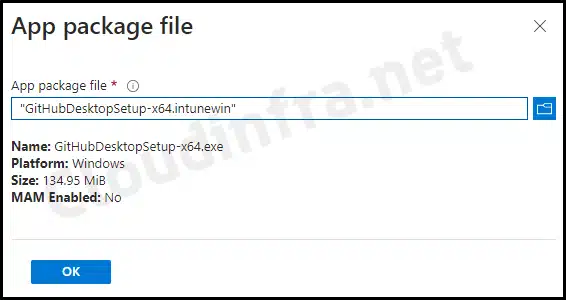
Provide Information in the mandatory fields below. The rest of the fields are optional but useful for application documentation and troubleshooting issues.
- Required Fields
- Name – Provide a unique name of the application.
- Description – Provide a helpful description.
- Publisher – Provide Publisher Information. For example, Microsoft.

- Program:
- Install command: Provide Install command as GitHubDesktopSetup-x64.exe -s
- Uninstall command: Provide the same Uninstall command for now.
An alternative for Uninstall command not available is to use .MSI based Installer which will deploy this app in device context. You can also easily Uninstall this app when you use Line-of-business app option on Intune. I have provided the steps to create MSI based deployment of GitHub desktop app in the previous sections of this blog post.
Alternative to Uninstall Command when Deploying .exe based Github Desktop App
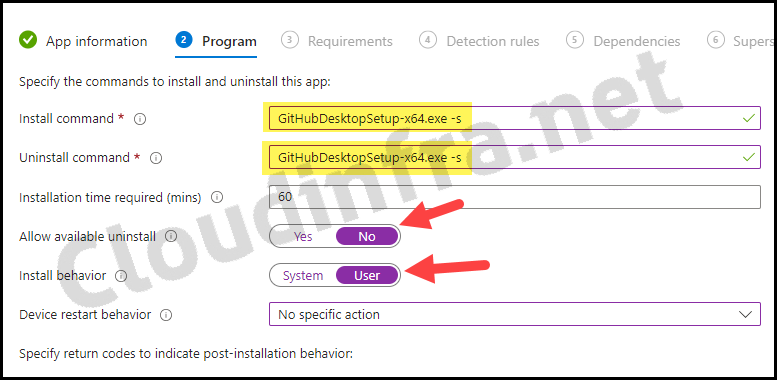
- Requirements: You can specify the requirements that devices must meet to deploy the app. If your devices mix 32-bit and 64-bit types, check the boxes for 32-bit and 64-bit in the operating system architecture drop-down. Else, go with 64-bit.
- Operating System Architecture: 64-bit
- Minimum operating system: Select the version used in your environment, such as Windows 10 1607.
- Detection Rules: Select Manually configure detection rules and click on +Add to add a detection rule.
- Rules Format: Select Manually configure detection rules
- Rule Type: File
- Path: %localappdata%\GitHubDesktop\
- File or folder: GitHubDesktop.exe
- Associated with a 32-bit app on 64-bit clients: No
- Assignments: Click on Add group to add an Entra security containing users or devices.
- Review + create: Review the deployment and click on Create.
Sync Intune Policies
The device check-in process might not begin immediately. If you’re testing this policy on a test device, you can manually kickstart Intune sync from the device itself or remotely through the Intune admin center.
Alternatively, you can use PowerShell to force the Intune sync on Windows devices. Restarting the device is another way to trigger the Intune device check-in process.
Monitoring Deployment Progress
From the Microsoft Intune admin center >Apps > All apps. Click on the deployment and check the Overview page to show the deployment status.
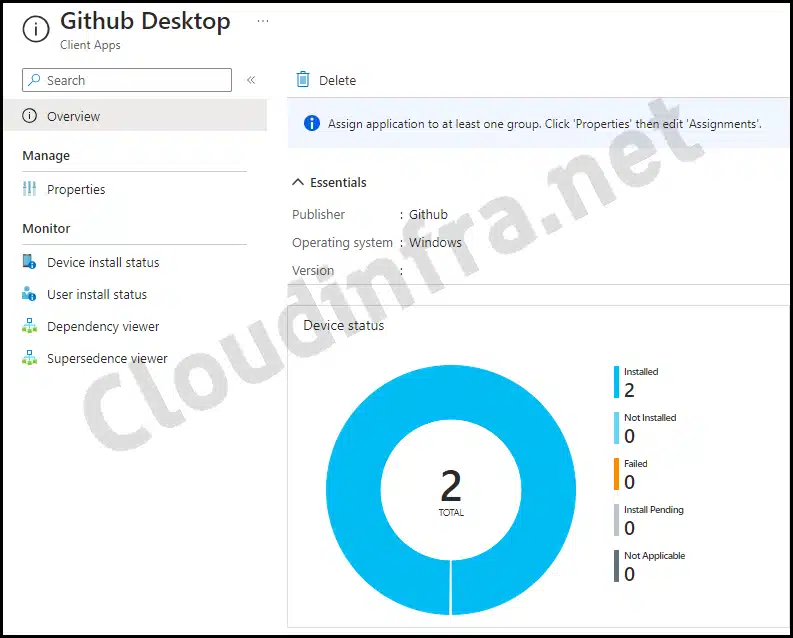
End User Experience
To verify whether the application has been successfully installed on the end user’s device, please follow these steps:
- Press the Win + R keys to open the Run dialog box
- Type appwiz.cpl and press enter to open the programs and features window
- Find the GitHub Desktop application in the list of Installed programs to confirm the Installation.
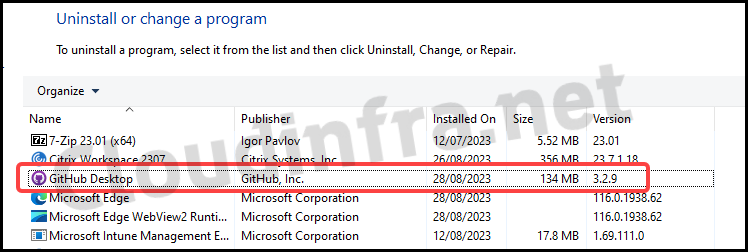
- Since we’ve installed this application in the user’s context, it will also be located within the user’s profile directory under the %localappdata% folder.
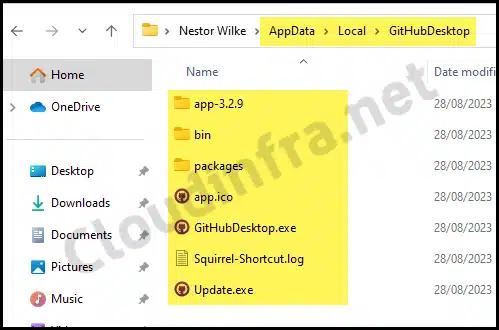
- You can also search for the GitHub Desktop application in the Start Menu and click on it to launch it.
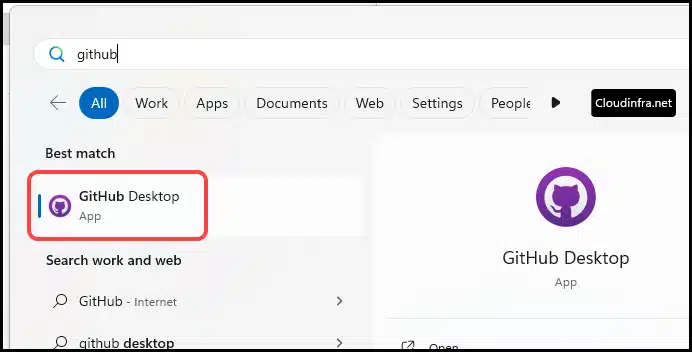
- Once you launch the application, you’ll encounter a window displaying a Welcome to GitHub Desktop message. To proceed, click on either Sign in to GitHub.com or GitHub Enterprise. If you don’t have a GitHub account, click Create your free account to create one.

Conclusion
In this blog post, we’ve explored the process of deploying the GitHub Desktop application on Windows devices using Intune. When you use the .exe file, it’s based on a user context and installs under the user’s profile. Alternatively, you can use MSI installer file, which can deploy the app in device context, making it available for all users who sign in.

With the .exe version of the installer, you can use %LOCALAPPDATA%\githubdesktop\Update.exe –uninstall to remove the app.
Thanks for your suggestion Dan. Will try that. 👍